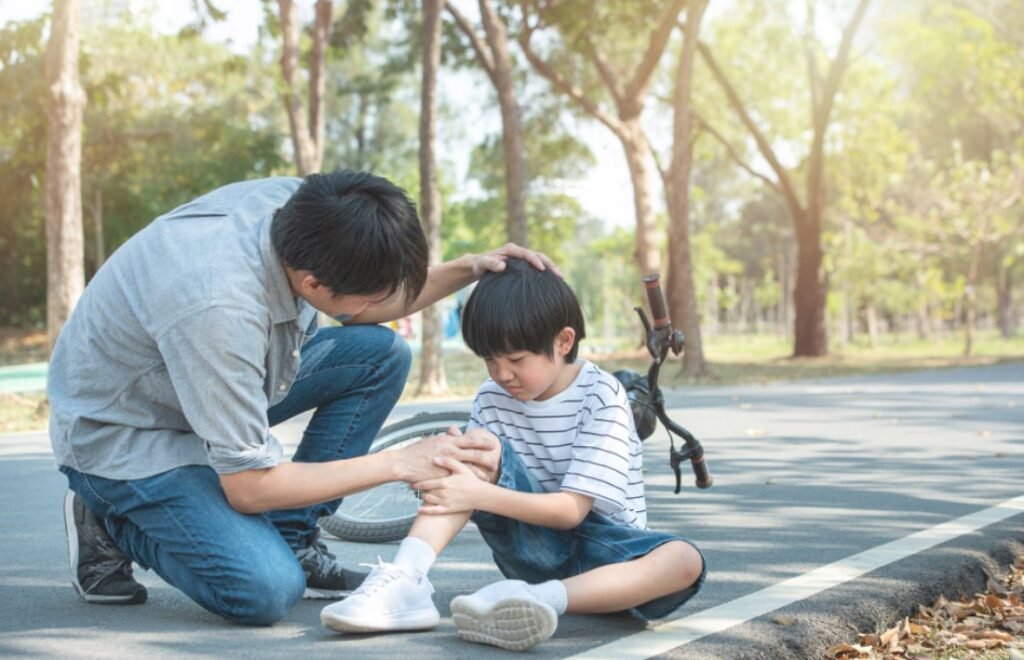Childhood is a time of exploration and discovery, filled with countless opportunities for discovering the world around them. However, this natural curiosity can sometimes lead to situations where children inadvertently find themselves at risk of accidental injuries. Whether it occurs in the home, at school, or on the playground, being aware of the common risks and effectively mitigating them can make a significant difference in keeping children safe. Accidental injuries remain a leading cause of harm among young children, and while they cannot be entirely eliminated, parents, caregivers, and educators play a vital role in preventing these incidents by creating safer environments and educating children about potential hazards.
Common Types of Accidental Injuries
Understanding the most frequent accidental injuries that children face can significantly aid in prevention efforts. Among these are falls, burns, poisoning, drowning, and road-related incidents.
Falls
Falls are prevalent due to a child’s developing motor skills and adventurous spirit. Young children may fall off furniture, stairs, or playground equipment. To mitigate these risks, it’s essential to install safety gates, use window guards, and supervise playtime, especially in places that feature climbing structures.
Burns
From reaching for a hot cup of coffee to accidentally brushing against a stove, burns represent a significant risk. It’s crucial to place hot objects out of children’s reach and never leave cooking unattended. Educating children about the dangers of heat sources is vital, along with installing smoke detectors to provide an added layer of safety.
Poisoning
Curiosity can lead children to ingest hazardous substances, thus making poisoning a common accidental injury. Household chemicals, medications, and certain plants pose serious risks. Storing these items in locked cabinets, clearly labeled, and out of reach is an effective preventive measure. Additionally, caregivers should educate children on the potential dangers of unknown substances.
Drowning
Water, while a source of fun and learning for children, also poses a drowning risk, especially for younger children who are still learning to swim. Never leave children unsupervised near water. Fences around pools and education on water safety can further reduce the risks associated with swimming and bathing.
Road-Related Accidents
The dangers presented by vehicles, whether walking, cycling, or in a car, are substantial. Road safety education is paramount, including the correct use of car seats, helmets, and teaching children about traffic rules. Supervision outside the home, particularly in busy areas, ensures additional safety.
Solutions and Preventive Measures
While challenges on the path to preventing accidental injuries may arise, a proactive approach can significantly reduce them.
Safety Education
Educating children about potential risks is foundational in preventing injuries. Whether through formal education programs or informal discussions at home, awareness is crucial. Children should learn to recognize dangerous situations and how to react appropriately.
Environmental Adjustments
Making changes in the environment where children spend most of their time can greatly aid in preventing accidental injuries. This includes childproofing the home, ensuring playground equipment is suitable for a child’s age and development, and using appropriate safety devices such as seat belts and helmets.
Supervision
Active supervision remains one of the most effective ways to prevent accidental injuries. Adult presence during high-risk activities can mitigate potential dangers and provide immediate assistance if needed.
Community and School Programs
Collaborative programs that include schools, local communities, and healthcare providers can spread awareness about accidental injury prevention. Workshops, seminars, and community events can engage parents and children, reinforcing safety messages.
Role of Healthcare Providers
Healthcare providers can play an essential role by offering guidance on child safety during visits. Educating parents about the latest safety recommendations and providing resources like pamphlets or websites can ensure that caregivers are aware of how to prevent injuries.
Healthcare professionals also aid in treating injuries promptly and effectively, which can minimize complications. Sharing statistics and research on common accidents can further highlight the importance of preventive measures.
Technology and Innovation
Technological advances offer new solutions for preventing accidental injuries. From smart home products that alert caregivers of potential dangers to applications that help parents track their children’s activities, technology can offer an additional layer of safety, easing the burden on caregivers.
Conclusion
By understanding and anticipating the risks of accidental injuries, caregivers can help foster a safer environment for children to grow and explore. The commitment to ongoing education, environmental adaptations, supervision, and using community resources to reinforce safety measures is paramount. As children navigate their worlds, the collective efforts of parents, educators, and healthcare professionals will significantly reduce the likelihood of accidents and promote a culture of safety that will serve them throughout their lives.
